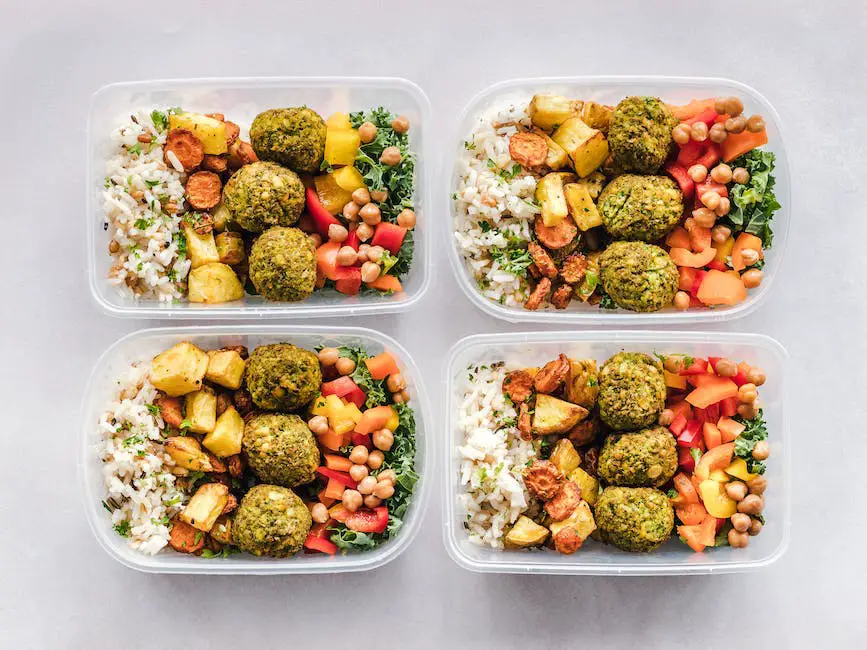IKEA, well-known for its affordable furniture and home goods, also offers a noteworthy range of food products in its in-house café and food shop. Equally as fascinating as their product designs, is the choice of ingredients and their sourcing policies in regard to the offered food items. The globally loved Swedish brand not only delivers palatable options from their homeland but also shows a remarkable commitment to transparency and sustainability in their sourcing practices. Alongside this, they cater to an array of dietary preferences and manage allergens with serious caution, offering detailed information to the customers. This assessment explores IKEA’s food ingredients, their sourcing, and their dedicated efforts to meet various dietary restrictions.
IKEA’s In-House Foods
IKEA’s In-House Foods: A Culinary Tour of Sweden
IKEA in-house offerings are nothing short of a culinary cultural journey into Swedish cuisine. The most iconic food item available in most IKEA’s in-house café and food shops globally is the Swedish meatballs, also known as Köttbullar. These are traditionally made from a mixture of beef and pork, seasoned with simple spices like onion, black pepper, and salt for an inviting, comfortable flavor. They are then coated with a rich gravy that includes ingredients like cream, soy sauce, and Dijon mustard.
Alongside the meatballs, IKEA also offers twists to popular international comfort foods. For example, their hot dogs, made with a base of either beef or plant-based alternatives, are a budget-friendly and quick option for shoppers. Their version of fish and chips includes sustainably sourced fish and are typically coated in a mixture that includes flour, salt, and water, deep-fried to provide a crunchy exterior and tender interior. It’s served with crispy French fries – a nod to the UK’s favourite takeaway.
Among the many delectable treats offered in IKEA’s dessert section, their Prinsesstårta is a stand-out representative of Swedish dairy tradition. This delightful dome-shaped cake is filled to the brim with whipped cream, custard, and a layer of raspberry or strawberry jam, all covered in a thin layer of green marzipan. IKEA prides itself in balancing their food offerings not only to cater to a variety of taste preferences but also in considering varying dietary needs. This includes providing clear information about their ingredients and potential allergens.

Main Ingredients Used
Breaking Down the Ingredients in IKEA’s Signature Foods
IKEA’s food selection is celebrated for its distinctiveness and cultural echo, which spans from their world-renowned Swedish meatballs to the delicate gravad lax. The meatballs, their star dish, are primarily composed of beef and pork, and are enhanced with the flavors of onion, breadcrumbs, egg, water, salt, and pepper. These are often enjoyed best with a side of cream sauce, lingonberry jam, and fluffy mashed potatoes. Meanwhile, the gravad lax, alternatively known as dill-cured salmon, is responsibly prepared using prime cut salmon, salt, sugar, and plenty of dill.
Striking the Balance: Nutrition and Taste in IKEA Food
IKEA’s food philosophy spotlights an innovative balance between taste and health. Their signature Swedish meatballs, for instance, are a good source of protein, while their vegetable balls are rich in fiber and low in unhealthy saturated fats. These veggie balls incorporate a unique blend of chickpeas, green peas, carrots, bell peppers, corn, kale, pea starch, onions, canola oil, and mouth-watering seasoning. In line with rising global trends favoring plant-based diets, IKEA offers plant-based versions of their famed meatballs, considering both health benefits and environmental sustainability. Shaping the future of fast-food, IKEA launched the ‘veggie dog’ in 2018, concocted from a nutritious blend of kale, red lentils, carrots, and ginger, beautifully enveloped in a bun.

Transparency and Sustainability in Sourcing
IKEA’s Pledge for Transparent Sourcing
IKEA champions transparency in sourcing its food ingredients, extending the importance of its customers knowing the root of their food. For IKEA, transparency is not just about listing the ingredients, it also entails offering information about the production processes and sourcing locales of these ingredients. IKEA’s website allows customers to learn up-close about how their food is conceptualized and brought to life, often providing intriguing details of the individual farms involved in production.
Emphasizing Sustainability and Responsibility through IKEA’s Food Sourcing Practices
In addition to transparency, IKEA is also grounded in the principles of sustainability and responsible sourcing. The company is committed to ensuring that by 2030, all the raw materials used in their food items are sourced responsibly. IKEA is acutely aware of the global challenges that are associated with farming, including biodiversity loss, soil degradation, and water scarcity. In response to these challenges, IKEA is enthusiastically adopting regenerative agriculture practices, which are aimed at enhancing soil health, increasing biodiversity, and improving the lot of farmers. Moreover, IKEA is making considerable strides in enhancing animal welfare and diminishing antimicrobial use within its supply chains. All these endeavours clearly demonstrate that IKEA is not solely about offering tasty food, but also about making a positive impact on the environment and society.

Photo by videmusart on Unsplash
Allergens and Dietary Restrictions
IKEA’s Diligence with Allergens and Dietary Restrictions
IKEA is highly conscious of the varying dietary restrictions and allergen sensitivities of its customers. Consequently, they ensure that every food product is meticulously labeled to indicate any presence of common allergens such as gluten, dairy, nuts, eggs, and more. IKEA exercises caution even with mild allergens, being mindful of those with heightened food sensitivities. Moreover, the packaging of their products provides rigorous information on potential cross-contamination allergens. This is done by identifying allergenic ingredients that might unintentionally cross paths with other food products during the manufacturing process. This commitment is geared towards empowering consumers to make informed and safe food choices.
IKEA also accommodates a variety of dietary restrictions in their food offering. The Swedish retailer has made great strides in enhancing its vegetarian and vegan food options to meet the rising global demand for plant-based alternatives. Gluten-free options are also available across their food range. Various food labels and symbols are utilized to clearly identify these products. For instance, plant-based options are marked with a “PB” symbol, while gluten-free options have a “GF” indicator. This easy-to-understand labeling system allows customers to quickly and accurately choose items that align with their dietary needs or preferences, further escalating IKEA’s commitment towards inclusivity in food provision.

Having examined in detail, it is evident that IKEA’s approach to food service is as innovative and considerate as their approach to furniture. Their popular food items like Swedish meatballs, hot dogs, and fish and chips aren’t just mouth-watering treats but a testament to their commitment towards quality ingredients and sustainable sourcing practices. Furthermore, their seriousness in managing allergens and catering to different dietary choices makes them even more trustworthy in the eyes of health-conscious consumers. So, next time you visit IKEA for furniture shopping, remember that their food offerings are not just a casual grab but a well-planned culinary experience that promises quality, safety, and consideration for your dietary needs.


